Farai Matake: Crafting African legacy, one indigenous music instrument at a time
Farai Matake has made it his mission to preserve and promote Africa’s traditional musical heritage. Since founding Matake Projects in 2014, the South Africa-based Zimbabwean musician and instrument maker has endeavoured to bridge the gap between tradition and innovation by crafting high-quality African instruments and fostering cultural appreciation through music education and performance.
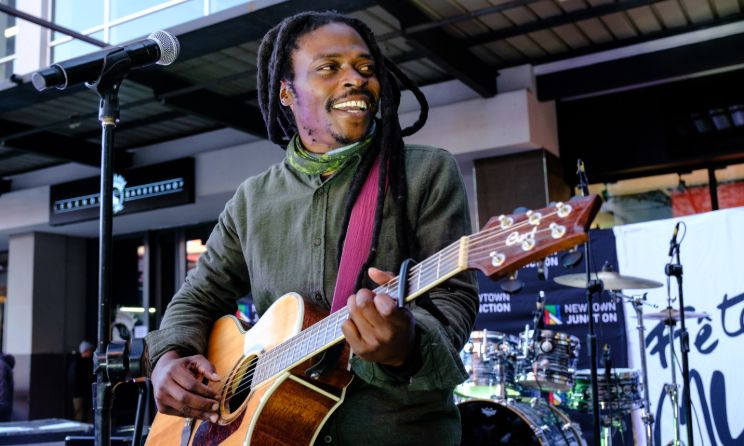 South Africa-based Zimbabwean musician and instrument maker Farai Matake.
South Africa-based Zimbabwean musician and instrument maker Farai Matake.
Under his leadership, Matake Projects has grown into a respected and dynamic enterprise specialising in three key areas: the manufacturing and repair of traditional African instruments, music facilitation programmes, and live music entertainment.
His deep knowledge of indigenous craftsmanship is reflected in the meticulously produced and restored instruments such as mbira, marimba, djembe drums, uhadi, kush kash, and shakers that can be seen at the Matake Projects store. By using authentic materials and time-honoured building techniques, he ensures that each instrument maintains its cultural integrity while meeting the highest quality standards.
Beyond instrument making, Matake remains passionate about passing down traditional knowledge to future generations through initiatives that not only preserve cultural heritage but also promote community engagement and education.
A former trainee in the inaugural Music In Africa Foundation Instrument Building and Repair (IBR) Project in 2016, Matake was thrust into the opposite role when he served as a trainer during the third edition of the programme held in Johannesburg, South Africa, from 16 to 21 February 2025.
MUSIC IN AFRICA: What inspired your love for African indigenous instruments and the need to train others to build them?
FARAI MATAKE: I received my first mbira from a spirit medium in the Great Zimbabwe area, and that experience sparked a lifelong passion for preserving and sharing indigenous African music. I believe that by training others, I can pass on this rich cultural knowledge, ensuring that these instruments and their traditions continue to thrive in modern times. I have become deeply passionate about preserving and promoting African musical heritage, not only as a working musician but also through my company Matake Projects, where we manufacture and fix indigenous musical instruments.
Can you share some insights into the historical and cultural significance of the instruments you build?
Each instrument carries a deep cultural and spiritual significance. The balafon, originating from West Africa, was traditionally played by griots to preserve oral traditions. It’s an instrument that is closely related to the marimba, which is used by both the Shona people of Zimbabwe and the Venda people of South Africa. These instruments are more than musical tools; they are vessels of ancestral knowledge, identity, and community connection. I also train on the mbira, which has been used for centuries in Shona spiritual ceremonies, storytelling, and social gatherings. One can also find traces of the mbira in parts of the African continent, though the names of the instrument vary, for instance, it’s called sanza in Central Africa, likembe in the DRC, and kasayi in Rwanda.
Which specific indigenous African musical instruments form the focus of your training, and what influenced your choice?
As part of the Music In Africa IBR initiative, my focus for the 2025 training programme was on the balafon, an instrument I specialise in, along with other traditional instruments including the mbira, marimba, djembe drums, shakers, kush kash, and the uhadi/umakhoyane. My expertise is mostly in Southern African musical instruments, but in recent years I have expanded my knowledge of the intricacies and manufacturing of other African musical instruments. The balafon has the ability to connect both Southern and Western African people given its relation to the marimba. I believe it is important not only to preserve our culture through music but for African people to engage with different indigenous instruments that are inherently from our different regions. I am dedicated to ensuring that indigenous musical instruments are in demand in contemporary music and that our music heritage continues to be celebrated.
What materials traditionally go into crafting these instruments, and how do you source them?
In West Africa, balafon keys are traditionally made from kosso rosewood, while in the Southern region, alternatives such as kiaat, iroko, or stinkwood are used. Regardless of the type of wood, it must be extremely dry. The frames of the instrument are typically crafted from bamboo and dowel sticks. To achieve optimal sound resonance, organic gourds or calabashes are used, and the pieces are held together by strings. Traditionally, these strings are made from goat skin, bast fibre, or strips of bark.
For the mbira soundboard, mubvamaropa wood, also known as kiaat, is commonly used. The metal keys, on the other hand, can be crafted from a variety of materials, including spring wire, mild steel wire, galvanised wire, and stainless steel wire. The choice of material often depends on the availability of resources in the area where the mbira maker resides, as well as their personal preferences. In sourcing materials for my own instruments, I rely on several suppliers.
What key skills and techniques do participants need to master in order to create these instruments?
To become proficient in playing and crafting traditional African instruments, participants need to develop a comprehensive set of skills. This includes woodworking skills, such as accurate measuring, cutting, shaping, and assembling wooden components. Metalworking skills are also essential, encompassing forging, tuning, and shaping metal keys, particularly for instruments like the mbira.
Additionally, participants must master carving and hollowing techniques, which are crucial for achieving optimal resonance and durability. Stringing and assembly skills are also vital, ensuring proper tension and sound quality. Furthermore, participants must learn tuning and sound testing techniques to refine the instrument's tonal quality.
Technical proficiency is also necessary, involving learning how to hold, play, tune, and repair the instrument if it becomes damaged. Beyond technical skills, participants must also cultivate cultural understanding, including the historical context and cultural significance of the instrument. This involves embracing the oral tradition of knowledge transmission, as many African musical traditions are passed down through generations without written notation. Adaptability and innovation are also essential, as participants must be open to learning new styles and techniques associated with the instrument while also combining traditional techniques with modern influences to create a unique musical voice.
Respect and sensitivity towards the cultural heritage of the instrument are also paramount. For instance, the djembe instrument originates from the Bambara people in Mali, who use the phrase “Anke djé, anke bé” – meaning “everyone gathers together in peace” – to define the drum’s purpose.
Finally, participants are encouraged to share their knowledge and skills with others through mentorship and teaching. This requires developing business acumen, including market research and analysis, competitor analysis, cultural trends, product development, supply chain management, marketing and branding, sales and distribution, financial management, customer engagement, sustainability, and social impact.
How do you strike a balance between traditional craftsmanship and modern techniques?
As a craftsman, I prioritise preserving traditional techniques while integrating modern innovations that are beneficial. This approach allows me to create instruments that not only honour their heritage but also cater to contemporary needs. For instance, I use electronic pickups to amplify the mbira for modern performances, ensuring that the traditional acoustic sound remains authentic.
I also explore sustainable materials to replace endangered resources, maintaining the instrument’s quality and resonance. This commitment to sustainability enables me to create various versions of the instrument, ranging from traditional to modern and hybrid models that blend the best of both worlds.
When adopting a traditional approach, I use natural materials like goat skin strings or bast fibre paired with calabashes to honour the instrument’s heritage. In contrast, modern materials like PVC pipes and polyethylene ropes offer greater durability, resistance to environmental factors, and easier sourcing.
To strike a balance between tradition and innovation, I offer durable, modern pieces while also providing a heritage edition of the balafon, crafted with traditional materials for those seeking an authentic experience. Furthermore, I create high-quality sample packs and digital plugins, ensuring that the balafon sound is accessible to contemporary music producers across genres like amapiano, Afro-tech, neo-soul, and hip hop.
Throughout this process, I take care to retain the organic nuances of the instrument, such as the distinctive buzzing sound from the gourd resonators. By collaborating with artists in electronic and hip hop scenes, I aim to showcase the versatility of traditional sounds in modern music, pushing the boundaries of innovation while preserving the rich cultural heritage of the balafon.
What challenges do trainees commonly face while learning this craft, and how do you guide them through these difficulties?
As a mentor, I’ve identified common challenges that aspiring instrument makers face, and I’ve developed strategies to help them overcome these obstacles. One of the primary challenges is the need for precision and patience. Many struggle with the detailed craftsmanship required, but I emphasise the importance of practice and technique refinement. Instrument making demands meticulous attention to detail, which can be frustrating for beginners. To address this, I break tasks into smaller, manageable steps, encouraging patience and celebrating small successes to build confidence.
Another challenge is tuning complexities. To help my students develop an ear for sound, I teach step-by-step tuning methods. Sourcing and material knowledge is also a common hurdle. Many lack an understanding of the properties of materials like wood, gourds, or animal skins, leading to mistakes in selection or handling. I provide guidance on ethical sourcing and alternatives, teaching material science basics, including how to choose, treat, and work with different materials.
Additionally, many aspiring instrument makers lack technical skills and experience with machine operation. To address this, I start with basic training in tool and machine use, emphasising safety and providing hands-on practice with simple projects before moving on to complex instrument making.
Effective time management is also crucial, as instrument making can be time-consuming. To help my students balance learning with other responsibilities, I create a structured schedule with clear milestones. Finally, fear of failure can hinder creativity and progress. To overcome this, I foster a supportive environment where mistakes are seen as learning opportunities. I also group my students in teams where they work with other experienced trainees, promoting collaboration and mutual support.
How has the demand for indigenous African musical instruments changed in contemporary music and global markets?
The demand for indigenous African instruments has undergone significant growth in contemporary music and global markets. This surge is driven by various factors, including cultural appreciation, globalisation, fusion genres, the rise of digital platforms, and initiatives such as the IBR project by the Music In Africa Foundation.
Increased global awareness and appreciation of African culture have contributed to this trend. Cultural exchange programmes, tourism, and cultural festivals have created opportunities for people to experience and engage with African music and instruments. For instance, tourists visiting Africa often seek authentic cultural experiences, including purchasing traditional instruments as souvenirs or learning to play them.
Government initiatives have also played a crucial role in promoting African indigenous instruments abroad. The Department of Trade, Industry and Competition’s (DTIC’s) Export Marketing and Investing Assistance (EMIA) programme is a notable example. This programme provides financial assistance to exporters to develop export markets for South African products and services, including indigenous instruments.
Educational and cultural institutions have also contributed to the growing demand for African instruments. Organisations like the Music In Africa Foundation offer instrument building and repair workshops, while music schools and universities collaborate to promote African music and instruments.
However, meeting this growing demand poses several challenges. One major concern is the risk of mass-produced, low-quality instruments flooding the market, undermining the value of authentic, handcrafted pieces. Additionally, cultural appropriation is a significant issue, with some critics arguing that the commercialisation of African instruments by non-African entities can lead to cultural exploitation.
How has your experience with the IBR project shaped your approach to building your own business in the music industry? What specific skills or knowledge from the project have been particularly valuable to you?
The IBR project played a crucial role in shaping my approach to making masterpieces of musical instruments. As a beneficiary of the project, I gained hands-on experience in crafting and repairing indigenous African instruments, refining my technical skills, and deepening my understanding of traditional craftsmanship.
Transitioning from a trainee to a trainer allowed me to not only master the craft but also develop my skills in teaching, mentorship, and leadership. Some of the key takeaways from the IBR project include technical expertise, business acumen, training and mentorship, networks and collaborations, problem solving and critical thinking, project management, and public speaking.
How has your business evolved and grown over time? What new initiatives or partnerships have you pursued, and in what ways has the IBR project continued to influence your work?
Since its founding in 2014, Matake Projects has evolved from a small-scale instrument-making initiative into a multifaceted business that now includes instrument crafting, training on how to play, training on how to make the instruments, repair services, and cultural collaborations. Over time, I have expanded my reach by partnering with musicians, artists, and cultural organisations to promote African indigenous instruments both locally and internationally.
One of the most exciting recent initiatives is the Hiving and Humming, an ongoing collaborative project with Dunja Herzog (Switzerland), Thembalezwe Mntambo (South Africa), and Thobekile Mbanda (South Africa). The project explores the connection between sound, vibration, and nature, particularly focusing on the resonance of bees and their environment. It involves creating new instruments and transforming existing ones to embody the sensory experiences of nature. This interdisciplinary approach has allowed Matake Projects to push the boundaries of instrument making, incorporating artistic experimentation and ecological awareness.
The IBR project continues to influence my work by reinforcing my commitment to knowledge sharing, sustainable craftsmanship, and collaborative innovation. The skills I gained as both a trainee and trainer in the IBR project have helped me refine my techniques, mentor upcoming instrument makers, and integrate modern methods into traditional practices. Additionally, the network I built through the IBR has opened doors for new partnerships and opportunities to showcase African musical instruments on larger platforms.












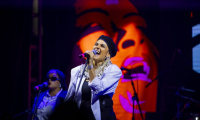



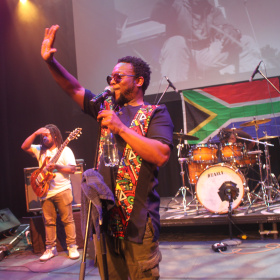
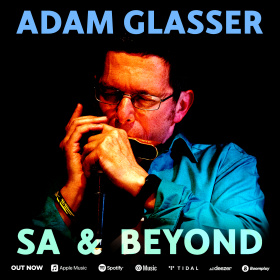
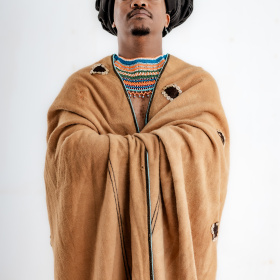

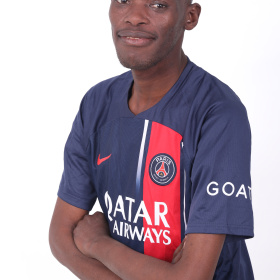


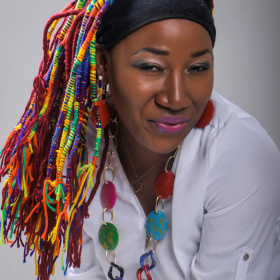
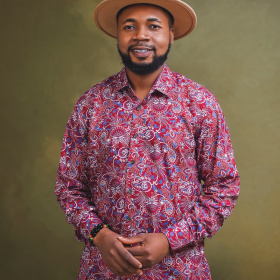



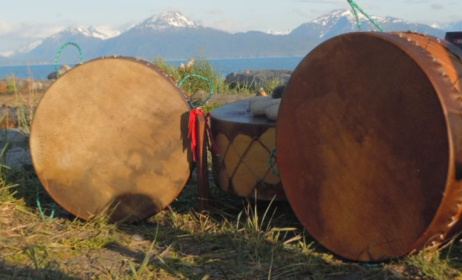
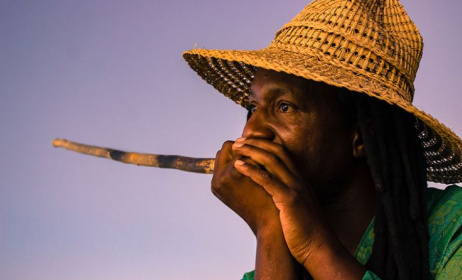



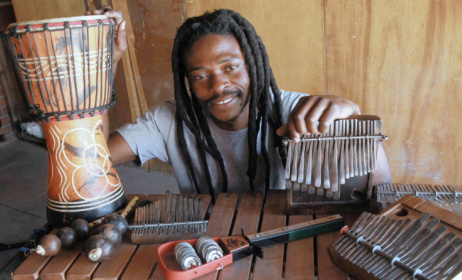
Comments
Log in or register to post comments